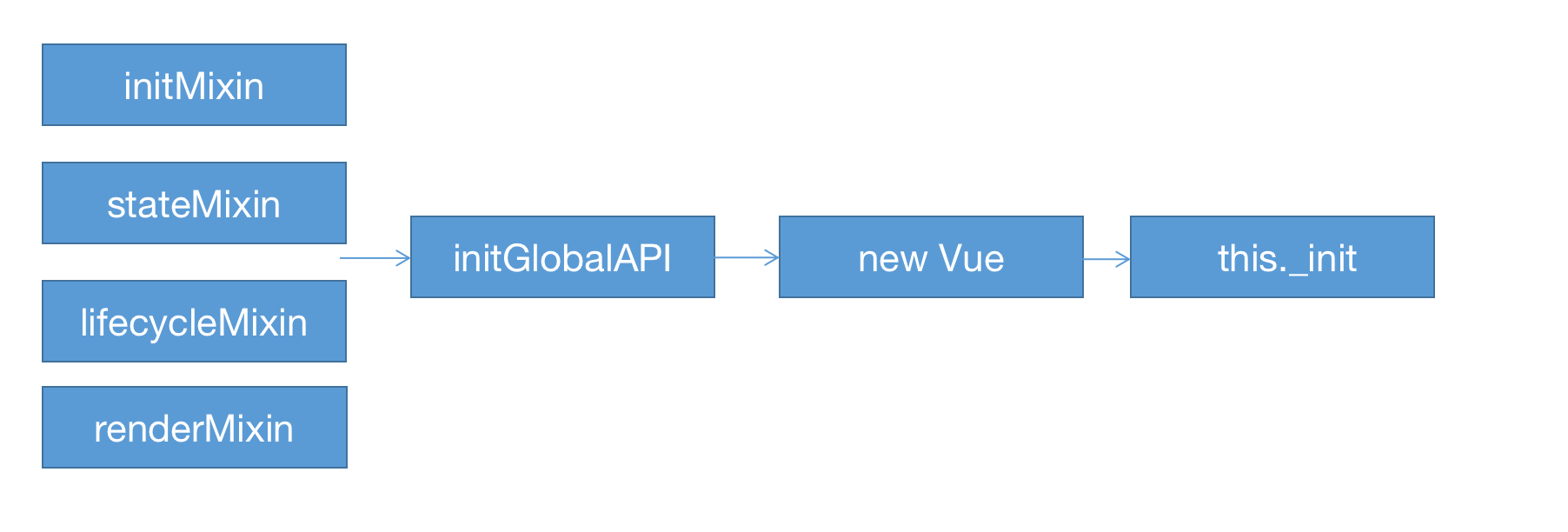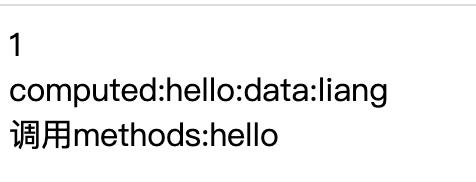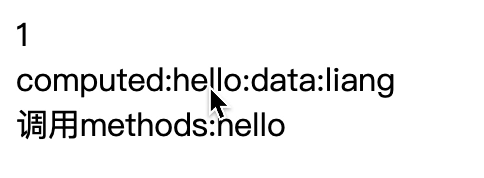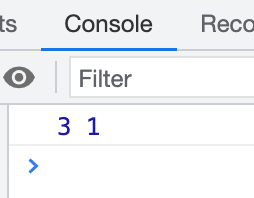之前的文章把响应式系统基本讲完了,没看过的同学可以看一下 vue.windliang.wang/ (opens new window)。这篇文章主要是按照 Vue2 源码的目录格式和调用过程,把我们之前写的响应式系统移动进去。
html 中我们提供一个 id 为 root 的根 dom 。
<!DOCTYPE html>
<html lang="en">
<head>
<meta charset="UTF-8" />
<meta http-equiv="X-UA-Compatible" content="IE=edge" />
<meta name="viewport" content="width=device-width, initial-scale=1.0" />
<title>Document</title>
</head>
<body>
<div id="root"></div>
<script src="bundle.js"></script>
</body>
</html>
其中 bundle.js 就是我们打包好的测试代码,对应 ./VueLiang0/vueliang0.js ,代码如下:
import Vue from "./src/core/index";
new Vue({
el: "#root",
data() {
return {
test: 1,
name: "data:liang",
};
},
watch: {
test(newVal, oldVal) {
console.log(newVal, oldVal);
},
},
computed: {
text() {
return "computed:hello:" + this.name;
},
},
methods: {
hello() {
return "调用methods:hello";
},
click() {
this.test = 3;
this.name = "wind";
},
},
render() {
const node = document.createElement("div");
const dataNode = document.createElement("div");
dataNode.innerText = this.test;
node.append(dataNode);
const computedNode = document.createElement("div");
computedNode.innerText = this.text;
node.append(computedNode);
const methodsNode = document.createElement("div");
methodsNode.innerText = this.hello();
node.append(methodsNode);
node.addEventListener("click", this.click);
return node;
},
});
提供了 data 、watch 、computed、methods ,在 render 方法中正常情况的话应该是返回虚拟 dom ,这里我们直接生成一个真的 dom 返回。
# 代理
我们使用 data、methods 或者 computed 的时候,都是通过 this.xxx ,而不是 this.data.xxx 或者 this.methods.xxx ,是因为 Vue 帮我们把这些属性、方法都挂载到了 Vue 实例上。
# 挂载 methods
// VueLiang0/src/core/instance/state.js
function initMethods(vm, methods) {
for (const key in methods) {
vm[key] =
typeof methods[key] !== "function" ? noop : bind(methods[key], vm);
}
}
# 挂载 computed
export function defineComputed(target, key, userDef) {
...
Object.defineProperty(target, key, sharedPropertyDefinition);
}
# 挂载 data
function initData(vm) {
let data = vm.$options.data;
data = vm._data =
typeof data === "function" ? getData(data, vm) : data || {};
if (!isPlainObject(data)) {
data = {};
}
// proxy data on instance
const keys = Object.keys(data);
const props = vm.$options.props;
const methods = vm.$options.methods;
let i = keys.length;
while (i--) {
const key = keys[i];
// 检查 methods 是否有同名属性
if (process.env.NODE_ENV !== "production") {
if (methods && hasOwn(methods, key)) {
console.warn(
`Method "${key}" has already been defined as a data property.`,
vm
);
}
}
// 检查 props 是否有同名属性
if (props && hasOwn(props, key)) {
process.env.NODE_ENV !== "production" &&
console.warn(
`The data property "${key}" is already declared as a prop. ` +
`Use prop default value instead.`,
vm
);
} else if (!isReserved(key)) { // 非内置属性
proxy(vm, `_data`, key); // 代理
}
}
observe(data); // 变为响应式数据
}
为了保证 data 的对象值的稳定,我们的 data 属性其实是一个函数,返回一个对象,所以上边我们用 getData 方法先拿到对象。
export function getData(data, vm) {
try {
return data.call(vm, vm);
} catch (e) {
return {};
}
}
之后依次判断 data 属性是否和 methods 、computed 属性重名,非线上环境会打印警告,然后调用 isReserved 判断是否是内置属性。
/**
* Check if a string starts with $ or _
*/
export function isReserved(str) {
const c = (str + "").charCodeAt(0);
return c === 0x24 || c === 0x5f;
}
最后调用 proxy 方法,将 data 属性挂在到 vm 对象中,相当于将 methods 、computed 的同名属性进行了覆盖。
export function proxy(target, sourceKey, key) {
sharedPropertyDefinition.get = function proxyGetter() {
return this[sourceKey][key];
};
sharedPropertyDefinition.set = function proxySetter(val) {
this[sourceKey][key] = val;
};
Object.defineProperty(target, key, sharedPropertyDefinition);
}
# 响应式
把各个属性初始化完成后,调用 mounted 方法,把我们的 dom 挂载到根节点中。
Vue.prototype._init = function (options) {
const vm = this;
vm.$options = options;
vm._renderProxy = vm;
initState(vm);
if (vm.$options.el) {
vm.$mount(vm.$options.el);
}
};
$mount 方法中把 el 对应的 dom 拿到,然后调用 mountComponent 方法进行挂载 dom 。
Vue.prototype.$mount = function (el) {
el = el && document.querySelector(el);
return mountComponent(this, el);
};
mountComponent 方法中定义 updateComponent 方法和 Watcher 对象,这样当 updateComponent 中依赖的属性变化的时候,updateComponent 就会被自动调用。
export function mountComponent(vm, el) {
vm.$el = el;
let updateComponent;
updateComponent = () => {
vm._update(vm._render());
};
// we set this to vm._watcher inside the watcher's constructor
// since the watcher's initial patch may call $forceUpdate (e.g. inside child
// component's mounted hook), which relies on vm._watcher being already defined
new Watcher(vm, updateComponent, noop /* isRenderWatcher */);
return vm;
}
_update 方法原本是进行虚拟 dom 的挂载,这里的话我们直接将 render 返回的 dom 进行挂载。
Vue.prototype._update = function (dom) {
const vm = this;
/*****这里仅仅是把 dom 更新,vue2 源码中这里会进行虚拟 dom 的处理 */
if (vm.$el.children[0]) {
vm.$el.removeChild(vm.$el.children[0]);
}
vm.$el.appendChild(dom);
/*******************************/
};
# 整体流程
入口文件代码如下:
import Vue from "./src/core/index";
new Vue({
el: "#root",
...
});
第一行代码 import Vue from "./src/core/index"; 的时候会进行一些初始化,src/core/index 代码如下:
// src/core/index
import Vue from './instance/index'
import { initGlobalAPI } from './global-api/index'
initGlobalAPI(Vue) // Vue 上挂载一些静态全局的方法
export default Vue
第一行 import Vue from './instance/index' 继续进行一些初始化,instance/index 代码如下:
// src/core/instance/index.js
import { initMixin } from "./init";
import { stateMixin } from "./state";
import { lifecycleMixin } from "./lifecycle";
import { renderMixin } from "./render";
function Vue(options) {
this._init(options);
}
initMixin(Vue);
stateMixin(Vue);
lifecycleMixin(Vue);
renderMixin(Vue);
export default Vue;
initMixin 是在 Vue 挂载一个 _init 方法,也就是在 new Vue 的时候执行。
import { initState } from "./state";
export function initMixin(Vue) {
Vue.prototype._init = function (options) {
const vm = this;
vm.$options = options;
vm._renderProxy = vm;
initState(vm);
if (vm.$options.el) {
vm.$mount(vm.$options.el);
}
};
}
_init 方法调用 initState 方法初始化 data 、watch 、computed、methods ,并且把他们变为响应式数据,还有上边讲到的把属性挂载到 Vue 实例上。
$mount 方法就是前边讲到的,把 render 返回的 dom 挂载到 el 节点上。
剩下的 stateMixin、lifecycleMixin 、renderMixin 是在 Vue.prototype 原型对象中挂载各种方法,这里不细说了。
所以整体过程就是下边的样子:

最开始的各种 Mixin 是在 Vue.prototype 原型对象上挂载需要的方法,initGlobalAPI 是直接在 Vue 上挂载方法,new Vue 就是传入 options 属性,接着调用 this.init 方法将 data 、watch 、computed、methods 这些进行初始化,最后调用 $mount 方法挂载 dom 。
# 最终效果
我们运行下程序,修改 webpack.config.js 的 entry 为我们写好的测试文件。
const path = require("path");
module.exports = {
entry: "./VueLiang0/vueliang0.js",
output: {
path: path.resolve(__dirname, "./dist"),
filename: "bundle.js",
},
devServer: {
static: path.resolve(__dirname, "./dist"),
},
};
然后执行 npm run dev 。

可以看到 data 、computed 和 methods 都调用正常,接下来测试一下响应式,我们测试文件中添加了 click 事件。
import Vue from "./src/core/index";
new Vue({
el: "#root",
data() {
return {
test: 1,
name: "data:liang",
};
},
watch: {
test(newVal, oldVal) {
console.log(newVal, oldVal);
},
},
computed: {
text() {
return "computed:hello:" + this.name;
},
},
methods: {
hello() {
return "调用methods:hello";
},
click() {
this.test = 3;
this.name = "wind";
},
},
render() {
const node = document.createElement("div");
const dataNode = document.createElement("div");
dataNode.innerText = this.test;
node.append(dataNode);
const computedNode = document.createElement("div");
computedNode.innerText = this.text;
node.append(computedNode);
const methodsNode = document.createElement("div");
methodsNode.innerText = this.hello();
node.append(methodsNode);
// click 事件
node.addEventListener("click", this.click);
return node;
},
});
点击的时候会更改 text 和 name 的值,看一下效果:

控制台也有 watch 输出的值:

当我们点击的时候视图就自动进行了更新,watch 也进行了回调,简化的响应式系统就被我们实现了。
# 总
更详细代码的大家可以在 github (opens new window) 进行查看和调试。
现在我们的 render 函数是直接返回 dom ,当某个属性改变的时候整个 dom 树会全部重新生成,但更好的方式肯定是采用虚拟 dom ,进行局部更新。
接下来的几篇文章就会开始虚拟 dom 的源码解析了,欢迎继续关注。